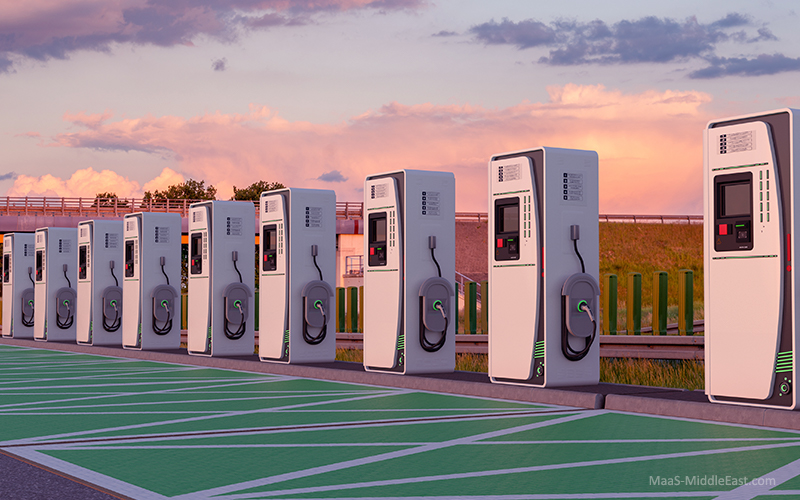What is Micromobility?
Micromobility is generally used to describe small vehicles that can seamlessly navigate highly populated urban areas. This type of vehicle is designed for short trips of only a few miles and travels at low speeds, typically under 15 mph. However, devices can have speed rates up to 45 km/h (28 m/h) and still be considered micro-mobility devices. They do not rely on internal combustion engines, but electric motors, not gas-powered ones, power them. Vehicles like these are typically shared—rented via a smartphone app or picked up at a docking station—and are often programmed to operate within a designated geographical boundary. Here’s a typical example of micromobility: suppose you are emerging from a subway and need a vehicle to ride. You can pull out your smartphone and rent a nearby electric scooter to traverse the last few blocks to your office. You left the scooter parked outside the building, where another renter picks it up half an hour later. Micromobility devices can bridge the gap between public transit options, replace cars for short trips, and complement larger delivery vehicles by providing last-mile services in dense neighborhoods.
Solution and advantages
Rideshare companies and municipalities are deploying micromobility solutions throughout cities so residents can easily access them when they need transportation. When equipped with edge computing technology and IoT devices, micromobility solutions such as these can be precisely tracked and managed. Asset management is integral to the success of any micromobility program.
The definition of what is micromobilty, and what is trending within this mobility segment include various vehicles: scooters, e-scooters, standard bicycles, e-bikes, segways, surreys, skateboards, rickshaws, pedicabs, and even electric golf cart rentals!
Micromobility offers much more than just a fun way to get around. It provides several key benefits for those who use it regularly.
Affordable
Renting a micromobility device is far more cost-effective than purchasing a full-sized vehicle. Maintaining insurance, paying for routine maintenance, and buying fuel are all canceled in micromobility. This will free up community members’ revenue, which they can then spend on necessities while also supporting local businesses.
Sustainable
Micromobility solutions create zero emissions, allowing densely populated areas to reduce their carbon footprint. They don’t rely on fossil fuels, meaning their use does not deplete the earth’s limited resources. Moreover, they don’t emit greenhouse gasses. This means they will not contribute to climate change.
Efficient
Once a micromobility network has been implemented, a city can reduce the burden on other types of public transit, such as buses and subway systems. At the end of the journey, they either drop it at a nearby docking station or park it anywhere—a process that’s much easier and more time-efficient than parking a car in a garage.
Convenient
The convenience factor is one of the most appealing aspects of micromobility. They’re more convenient for urban transit—users can rent from a dock or check an app to see where the nearest vehicle sits, rent it, and get going. Many dwellers also find that with an annual pass, it pays to get anywhere in the city via rental bikes, as they can find one anytime and do not need to perform their maintenance.
Global market overview
A survey revealed that micromobility uptake would be far from uniform because of location-specific factors. The willingness to use small vehicles was highest in countries like Italy (81 percent) and China (86 percent). At the other end of the world, only 60 percent of US users said they would consider micromobility, perhaps because they have traditionally relied on private cars or public transportation for their commutes. Seeing someone weaving through traffic on a moped or scooter is relatively rare in many countries.
An analysis performed by Deloitte reveals that annual e-bike sales in North America and Europe (combined total) nearly doubled from 2018 to reach an estimated 6.4 million in 2021. In 2019, Deloitte predicted solid global growth for e-bikes during 2020–2022, as they are a faster, easier, and healthier option for commuting. During 2020–21, even as the pandemic affected consumer vehicle sales globally and transit ridership fell 73% in the United States, total e-bike sales in the country grew 26% year over year and 22% in Europe.
Health and safety are one of the biggest reasons why micromobilty is growing so much. You do not have to worry about any creepy drivers who will drop you home. You are confident enough to ride your micromobility vehicles on your own and reach home safe and sound.
Besides health and safety, consumers have shown interest in buying their means of transport mainly to cut personal commute time, especially over short distances. The ability to avoid traffic is another massive benefit of electronic bikes. US consumers lost 99 hours per person annually due to traffic congestion, and drivers in London, Paris, and Brussels lost 130–150 hours per person annually because of traffic congestion.
Finally, the rising cost of gasoline may fuel e-bike growth in the United States and Europe. With global uncertainty lingering even after the pandemic, e-bikes seem to represent an attractive, environmentally responsible, short-distance commute option.
In terms of popularity, the commercial adoption of e-bikes is also gaining traction in logistics and delivery services, for example, bike rentals. Cargo e-bikes were the fastest-growing e-bike category in Europe in 2020, and increasing adoption of shared micromobility commuting post-pandemic may also bode well for e-bike sales.
Some projections regarding the e-scooter market growth estimate that the industry’s compound annual growth rate (CAGR) will be at 7.6% between 2021 and 2028.
TechCrunch says 2021 was the year of the e-bike as it has a growth rate of 240% in sales over the 12 months leading up to July.
According to Vantage Market Research (VMR), the future of the bike and scooter rental market economy is expected to grow by $11,040 million by 2028.
A study called The Promise of Low Carbon Freight found that cargo bikes helped save a total of 3,896 kilograms of CO2 and 5.5 kilograms of nitrogen oxide during three months.
Micromobility will be more in demand as intelligent cities seek to improve air quality, reduce traffic congestion, and improve social equity – enabling every citizen to access affordable transportation.
Success stories/cities
The popularity of micromobility accelerated as people knew more about its green side. Electric bikes have been and continue to be a large market in China, with over 30 million sold annually. The following cities have also experienced significant micromobility market growth or have performed important pilot projects: Barcelona, Spain; Chicago, Illinois; Los Angeles, California; Minneapolis, Minnesota; Montreal, Canada; New York City, New York; Oakland, California, San Francisco, California, Toronto, Canada.
Urban populations are interested in new ways to commute, save money, and reduce emissions. The Mobility Ownership Consumer Survey, conducted by the McKinsey Center for Future Mobility in July 2021, shows almost 70 percent stated that they were willing to use micromobility vehicles for their commute.
A growing number of workers may gravitate to more environmentally friendly forms of transport. Rising populations in cities worldwide can cause car traffic to become overwhelming, where micromibility can quickly reduce traffic issues. Shared micromobility, which allows users to rent and share these e-scooters and e-bikes, is generally considered a climate-friendly mobility solution that relieves urban traffic and contributes to CO2 reduction targets. However, cities are increasingly facing the challenge of adequately integrating these rapidly growing fleets of micro-vehicles.
Main player globally
The electric scooter industry has expanded significantly in just a few years, and the future outlook is impressive. Certain technologies within the micromobility sector are expected to experience the most sustained growth. Specifically, IoT devices, asset management platforms, and green technologies, such as solar charging for infrastructure, will all be in high demand as cities continue to adopt micromobility solutions.
The market’s scooter sharing or bike sharing segment is expected to grow at the highest rates, mainly due to significant venture capital investments from around the world. In more sprawling urban areas, there’s a growing demand for e-bikes because of their ability to traverse longer distances quickly.
Even though the micromobility market size has grown tremendously in just a few short years, with companies like Lyft and Bird leading the way, the industry is still in its infancy. Other than that, Veo, Spin, Lime, Uber, Wheels, VanMoof, and Cowboy companies are also in the market of micromobility and are competing quite well with each other. As a result, new innovations frequently occur, and creative solutions are always on the horizon.





